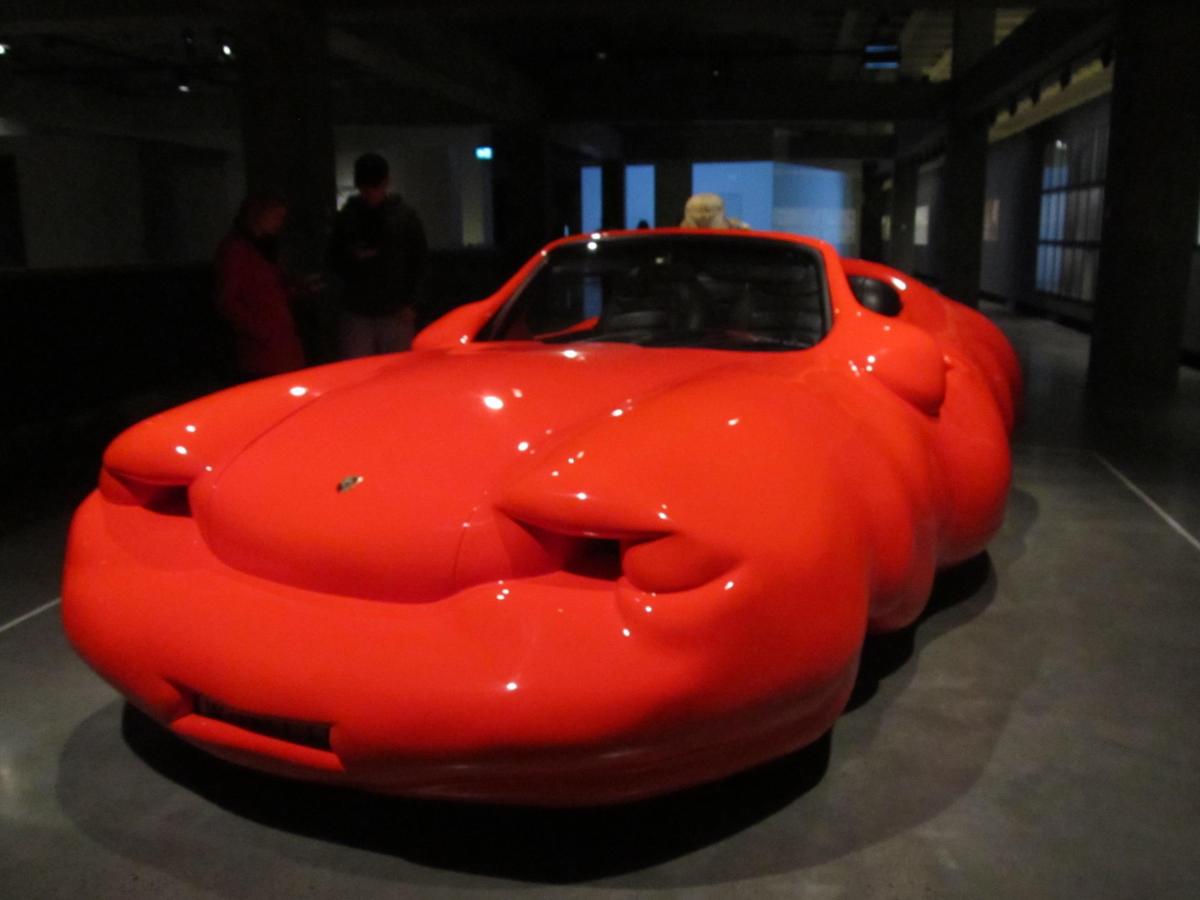Erwin Wurm, Fat Car at MONA
Inured from funding cuts by the Australia Council where arms-length funding has been cut to the shoulder, the majors sit on high as the small to medium and independent sectors carry the costs of cuts and of pet projects such as the Prime Minister’s Book Council of Australia.
Last November, the Australia Council’s CEO produced a Yes Minister moment at the Senate Estimates Hearing when asked to explain the cancellation of six-year funding for 14 small-to-medium companies.
He couldn’t and there was nary a whimper from the majors nor their peak body. Question is: should we expect there to be?
In the 2014 Philip Parsons Memorial Lecture, the outgoing artistic director of Sydney’s Belvoir Street Theatre, Ralph Myers, took to his constituency with a critical eye.
He was the second artistic director to do so last year: the Queensland Theatre Company’s artistic director Wesley Enoch had a go at arts leaders in July.
Expanding on a theme expounded by this author – the managerialisation of the performings arts sector – Myers’ focus was the substantive issue of artistic directorships in the major organisations and festivals going to administrators and managers. While much of what Myers says is admirable it was interesting to observe the “radicals” he was proposing to these positions. A bunch of good, young theatre directors they may be. Radicals they are not.
Such self-examination is welcome, but it exposes the insularity of the sector. The majors do not see themselves as part of a broader cultural program – which is why they don’t stand up for other sectors when they’re under threat.
Compound this insularity with the alchemy of class, education and wealth that Tim Winton spoke to in a 2013 article for The Monthly, Some Thoughts About Class in Australia:
Ask any director at a major theatre company in this country how many of their actors were educated in public schools. They’ll have to have a good hard think.
I suspect Winton’s profile of education and class (and logically, wealth) would also apply to the artistic executive, senior management and boards of the major organisations.
On numbers alone, the vast majority of Australian artists do not work for the 28 major organisations who receive the vast majority of Australian government arts funding. And over the last decade, government investment in infrastructure has forsaken artists and artistic creation for management.
All these factors serve to embed a country club mentality with artists on the wrong side of the membership profile.
This development is hardly surprising given the prosecution of conservative values by successive governments, their implementation by the Australia Council and their embrace by the majors. This process is reflected across society in which the haves have more – and the have-nots have significantly less.
For our artistic and cultural production, this growing divide is problematic in terms of diversity, quality, content and access. It already manifests as a collision of values when independent artists and small-to-medium companies are inadvertently coerced by government policy into working with the majors.
As the division grows, we will become a one-note culture telling stories and celebrating artists that uphold an official agenda tacitly agreed upon by government, its agencies and an industry elite.
So, short of burning down the clubhouse, what can we do about it?
Belgian political theorist Chantal Mouffe is especially interested in the cultural sector as a field of exploration. Briefly, her assertion is that adversarial activism can play a productive role in nurturing a healthy democracy. She outlines two modes of activism: individuals working within institutions or outside them.
A successful example of the first strategy is Lisa Havilah’s transformation of Sydney’s Carriageworks, as director, from white elephant to roaring lion. Her vision for a difficult space and place with a conflicted programming past has balanced content and form with an architecturally prescriptive venue. In comparison to many arts centres, Carriageworks is a dynamic, forceful and uncompromising concern.
Leading by example may positively re-configure the Australian cultural sector but can it save from itself?
Enter David Walsh, a real and present danger to the clubhouse. MONA – the private museum funded by Walsh in Tasmania – is a provocation that sits outside the norm, a brilliant mongrel of an idea that blindsided the establishment.
I’ve not encountered a cultural enterprise that solicits such positive response from as broad a demographic as MONA.
And artists love it. Why? Because in Walsh’s various guises as working-class hero, gambler, builder, curator and cultural operator, he embodies their ideal self. He’s bold, risky, teeters on the edge, uses language like a larrikin, and is uncharacteristically frank. He rapidly absorbs criticism he finds useful and just as rapidly excretes the extraneous. For Australian artists tamed by the system, Walsh represents the prospect that courage will offer greater return than timidity.
And it’s a lesson that translates widely because MONA morphed into a new entity that resembles some of the “architecture” that characterises an arts institution.
For artists who do not stand up for fear of losing what little agency they possess and for institutions terrified they will be punished for criticising government, the lesson is simple: courage is a process, risk is a friend.
Thinking and acting bravely outside the institutional square is the only thing that can save artists from the clubhouse, and the clubhouse from the doghouse.
This article was first published in The Conversation.





